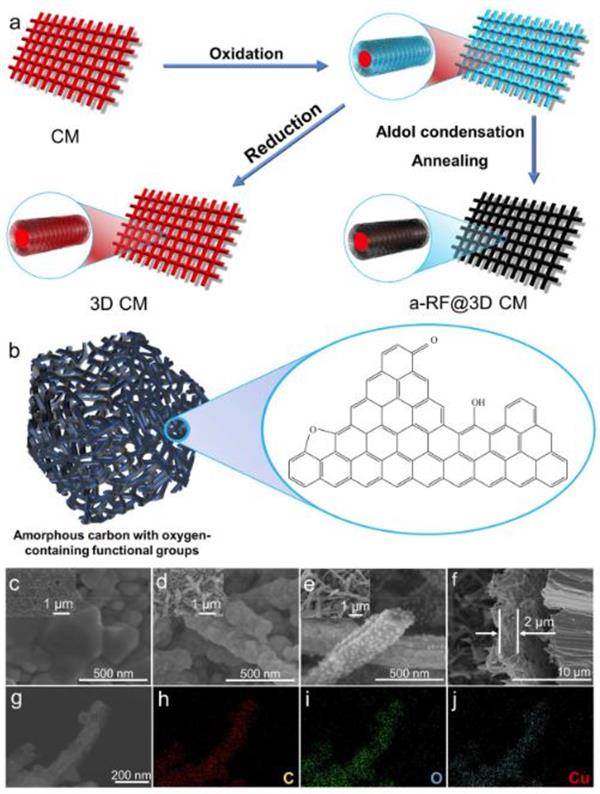Super-three-dimensional Lithiophilic Cu-based Current Collector for Anode-free Lithium Metal BatteryAuthor links open overlay panel
Nanrui Li a b, Tianqi Jia a b, Yanru Liu a b, Yunfei Ouyang a b, Yao Lv a c, Geng Zhong a b, Yufeng Wang a b, Bo Sun a b, Sirong Lu d, Shifei Huang* a b, Feiyu Kang* a b, Yidan Cao* a b
AbstractThe formation of Li dendrites and dead Li, which causes short circuits, continuous side reactions, low coulombic efficiency (CE) and thermal runaway, severely hinders the development of anode-free lithium metal batteries (AFLMB). Here, Cu-based current collector with super-three-dimensional lithiophilic modification layer is developed by the pyrolysis of resorcinol formaldehyde on 3D engineered copper mesh (a-RF@3D CM). The modification layer, consisting of highly dispersed CuOx sites in the O-containing defective carbon, together with the super-three-dimensional microstructure exhibits excellent lithiophilicity and capability to effectively reduce the nucleation overpotential, accommodate the uniform dendrite-free lithium deposition, promote stable and inorganic-rich SEI formation, and improve the cycle stability. As a result, the a-RF@3D CM current collector exhibits reduced nucleation overpotential of 14.2 mV and prolonged cycling life over 400 cycles with average CE >98.5%. In the LiFePO4||a-RF@3D CM anode-free cell, average CE of 99.50% and capacity retention of 60.66% are successfully achieved after 100 cycles. Meanwhile, average CE 99.78% and capacity retention of 64.43% are successfully achieved in LiFePO4||Li@a-RF@3D CM cell (N/P=1.6) after 200 cycles. The work provides feasible way to realize the fabrication of AFLMB, and also enhance the understanding of SEI evolution and regulation strategy of Li plating-stripping in advanced Li metal-based batteries.
https://doi.org/10.1016/j.mtener.2023.101341
本文第一作者為清華大學(xué)李楠瑞博士���,通訊作者為清華大學(xué)康飛宇教授、曹譯丹副教授和清華大學(xué)博士后����、助理研究員黃士飛博士